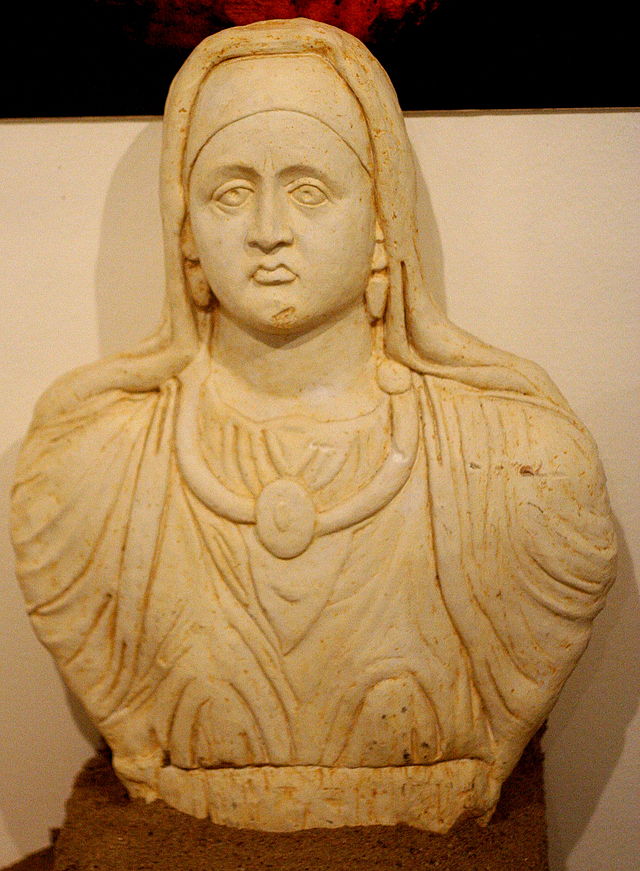Top Qs
Timeline
Chat
Perspective
Viti, Kosovo
Town and municipality in Gjilan, Kosovo From Wikipedia, the free encyclopedia
Remove ads
Viti (Albanian definite form: Vitia) or Vitina (Serbian Cyrillic: Витина) is a town and municipality located in the District of Gjilan in Kosovo. As of 2024, the town of Viti has 5,780 inhabitants, while the municipality has 35,566 inhabitants.[1]
Remove ads
History
Summarize
Perspective
Ancient times

In the Vërban archaeological site, the statue of Dea Dardanica was found.[2] The sculpture is thought that represents an ancient deity of the Dardani, an Illyrian people, it is considered a masterpiece of the Dardanian art.
Ottoman period
The municipality has several settlements historically inhabited by the Laramans, crypto-Catholics.
Kosovo War and aftermath
During the Kosovo War 16 KLA soldiers, as well as 5 Serb soldiers and policemen were killed in Viti.[3] The entire fighting happened in 1999 and in the southern part of the municipality, near the Karadak Mountains, in villages such as Lubishtë, Gjylekare, Mogillë, Smirë, Kabash and Dëbëlldeh.[3]

During and after the Kosovo War 76 civilians were killed, 38 Albanians and 38 Serbs.[3]

Following the 1999 Kosovo War, it was the home of A Company, 2/505 Parachute Infantry Regiment, 82nd Airborne Division, the first KFOR troops to begin stabilization efforts in the municipality. After the initial unit left, Viti was the site of a subsequent international scandal when a Staff Sgt. Frank J. Ronghi, from A company, 3/504 Parachute Infantry Regiment raped and killed a local girl. The subsequent investigation uncovered serious training and leadership deficiencies in the 3/504 Parachute Infantry Regiment, and catalysed a tremendous change in the training of units deploying for peacekeeping operations.[4] The Church of the Holy Mother of God, Podgorce was looted during the conflict.
During the NATO bombing of Yugoslavia, the Orthodox cemetery in Viti and the village of Dobreš were hit by missiles.[5]
In August 2003, explosive devices planted in Klokot destroyed five Serb houses, with several injuries, including two American KFOR soldiers.[6]
Serbian Orthodox cemeteries have been destroyed in Viti, among other towns, and in 2004 during unrest, nuns of the Binča monastery were physically attacked, by ethnic Albanians.[7]
Insurgency in the Preševo Valley
During the Insurgency in the Preševo Valley, the UÇPMB mostly recruited fighters from the Karadak region of Kosovo, specifically in the town of Vitia. In February 2001, many towns and villages in the region were covered with posters that instructed Albanians between the ages of 18 and 48 to join their fellow Albanians in the UÇPMB. These posters were supposedly issued by the previously disbanded KLA.[8]
Insurgency in Macedonia
Amidst the Insurgency in Macedonia, approximately 300 NLA fighters from the Vitia municipality, mostly recruited in Dëbëlldeh and Mjakë, participated in several battles against Macedonian security forces in Tanuševci.[9] The NLA also used Dëbëlldeh and Mjakë as strongholds, where they would store Arms.[10][11]
Contemporary
The village of Kllokot, formerly part of the municipality of Viti, was established as a separate municipality on 8 January 2010. This change was implemented in accordance with the Ahtisaari Plan for the decentralization of Kosovo, which proposed the creation of a new municipality with a Serbian majority within the territory Viti municipality.
In 2013 in response to a KLA monument being removed by Serbian authorities in Preševo, a Kosovo Albanian crowd in Viti demolished a Yugoslav-era memorial for anti-fascist Partisans that were killed during the Second World War.[12]
Remove ads
Geography
The municipality and the town of Viti is located in the southeastern Kosovo. The town is located around 20 km (12 mi) away from both Ferizaj and Gjilan. Viti and the southern part of the municipality lie on the foothills of the Karadak Mountains.[13]
Municipality

- Ballancë
- Beguncë
- Binça
- Budrikë e Epërme
- Buzovik
- Çifllak
- Dëbëlldeh
- Devajë
- Drobesh
- Gërmovë
- Gjylekar
- Goden i Madh
- Gushicë
- Kabash
- Letnicë
- Lubishtë
- Mjak
- Novosellë
- Podgorc
- Pozharan
- Radivojc
- Ramjan
- Ramnishtë
- Remnik
- Sadovinë e Çerkezëve
- Sadovinë e Jerlive
- Shasharë
- Sllatinë e Epërme
- Sllatinë e Poshtme
- Smirë
- Stubëll e Epërme
- Stubëll e Poshtme
- Tërpezë
- Tërstenik
- Vërban
- Vërnakollë
- Vërnez
- Zhiti
Demographics
According to the last census of 2024 by the Kosovo Agency of Statistics, the town of Viti has a 5,780 inhabitants while the municipality has 35,566 inhabitants.[14]
Ethnicity and language
The municipality is homogeneously Albanian where 99.3% of the population identifies as ethnic Albanian. The dialect of the Albanian language spoken by the inhabitants is Gheg.[14]
Religion
In terms of religious affiliation, 95% of the population identified as Sunni Muslim. Roman Catholics constituted 3.6% of the population, while 0.4% identified as Orthodox Christian. An additional 0.4% reported adherence to other religions. A small proportion, 0.1%, declared no religious affiliation, and 0.5% refused to answer.
Remove ads
Notable people
- Bastien Toma, footballer
- Betim Halimi, footballer
- Imri Demelezi, from Sllatinë e Poshtme, Deputy Minister of Agriculture, Forestry and Rural Development[15]
- Jonuz Zejnullahu, from Skifteraj, Imam and commander of the KLA.
- Liridon Krasniqi, footballer
- Marko Sopi, from Binač, Catholic prelate.
- Milaim Rama, footballer
- Muharrem Sahiti, from Budrikë, football coach.
- Njazi Azemi, from Mogillë, commander of the KLA and LAPMB.
- Rashit Mustafa, from Lubishtë, commander of the KLA.
- Salih Salihu, Deputy in Kosovan Parliament
- Shemsi Beqiri, from Viti, Kickboxing World Champion.
- Sinan Hasani, from Pozheran, President of Yugoslavia
- Urata Rama, sports shooter
- Visar Ymeri, politician.
Remove ads
See also
References
External links
Wikiwand - on
Seamless Wikipedia browsing. On steroids.
Remove ads







